Blog & Latest Updates
Fly Fishing Articles
Insects by Common Name


Updates from May 13, 2007
Photos by Troutnut from the West Branch of the Delaware River in New York
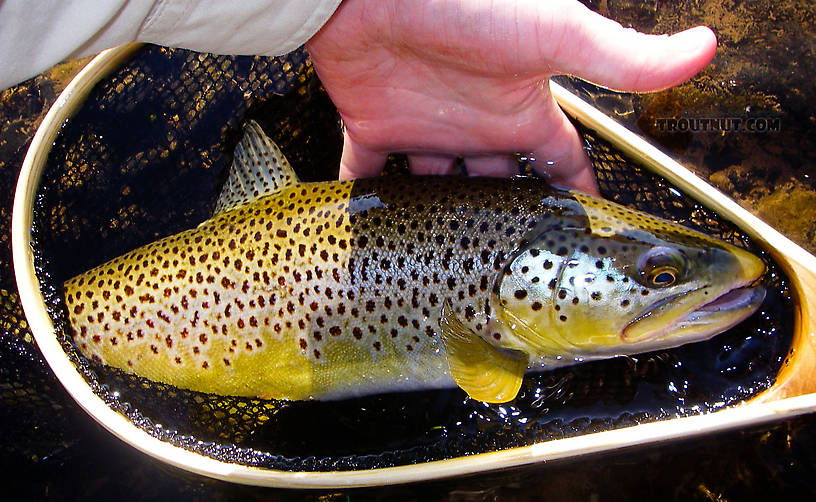
An 18-inch Catskill brown trout.
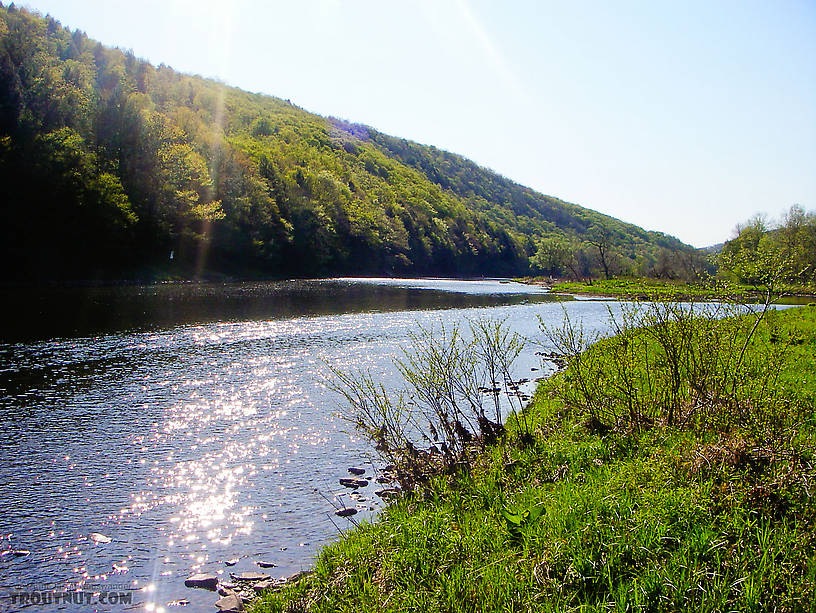
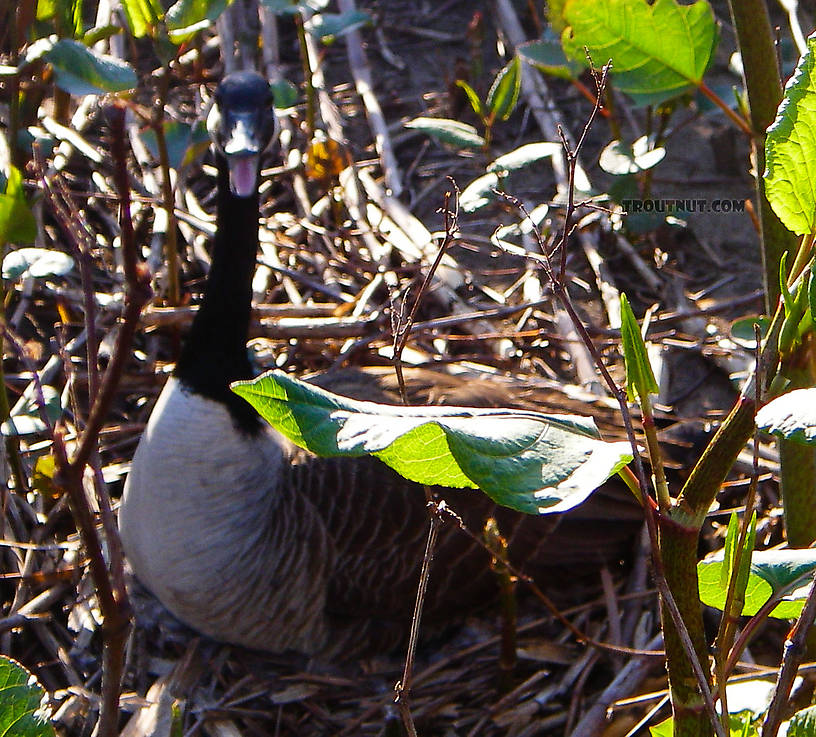
This is a common sight on the large Catskill rivers in early May, a mother goose guarding her nest. They like to nest on midstream islands where anglers are prone to walk from one fishing spot to another, and they do not back down. This one was hissing at me and I didn't want to get any closer.
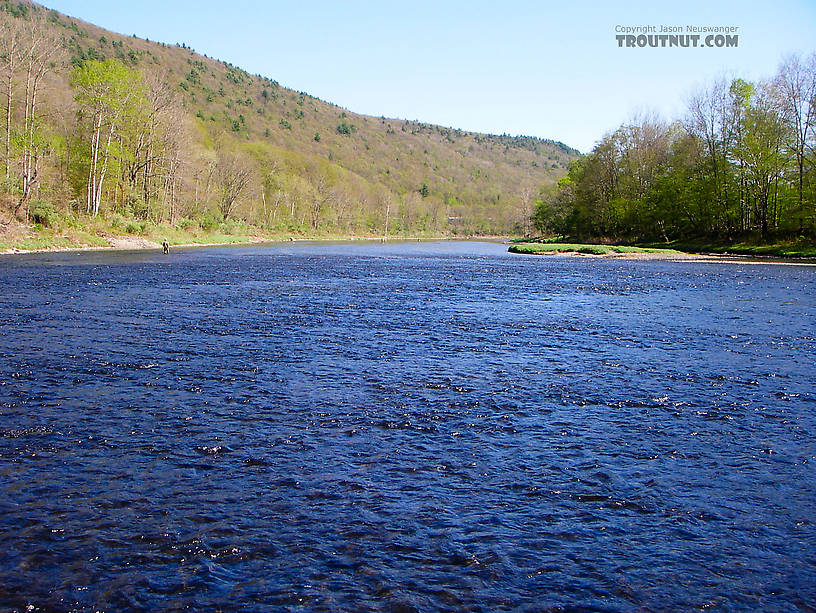
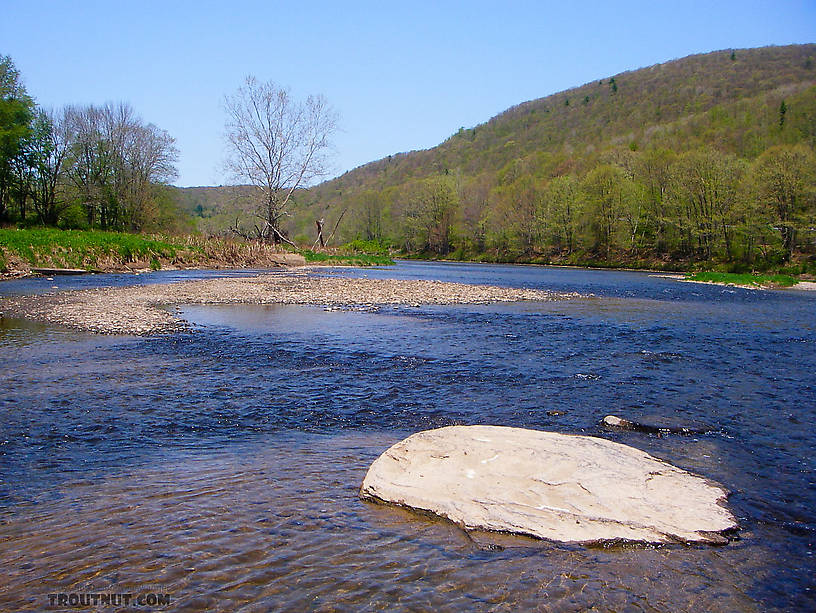
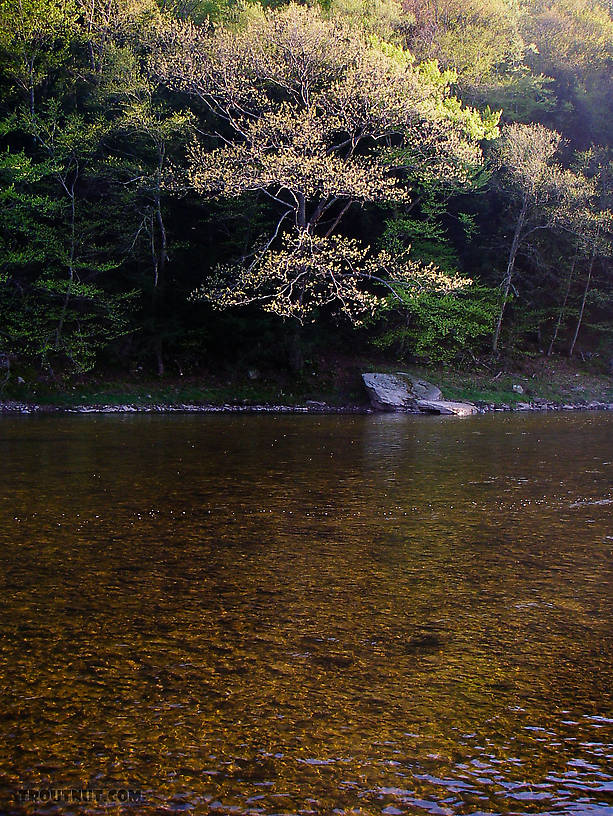
Underwater photos by Troutnut from the West Branch of the Delaware River in New York
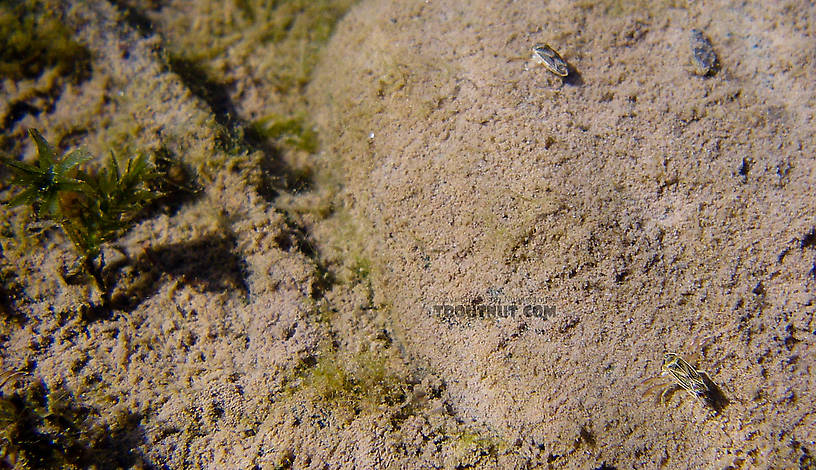
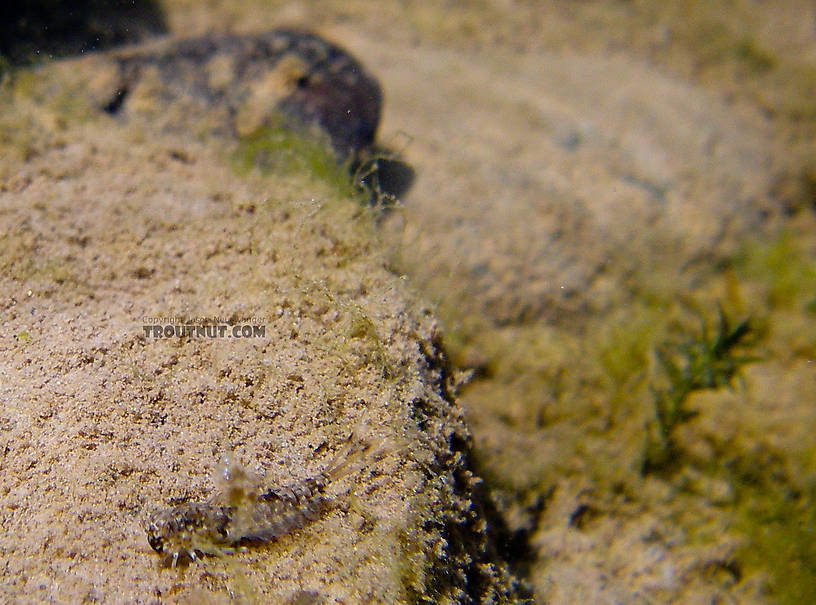
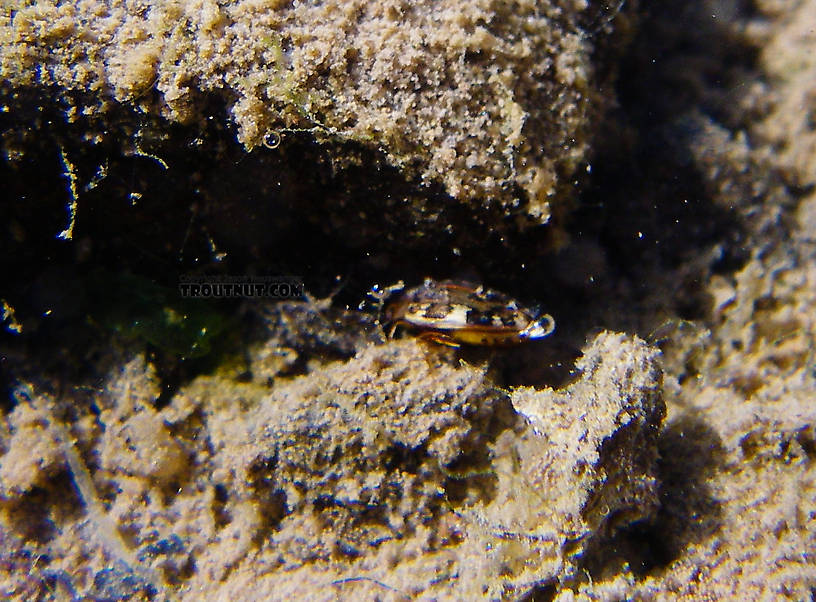
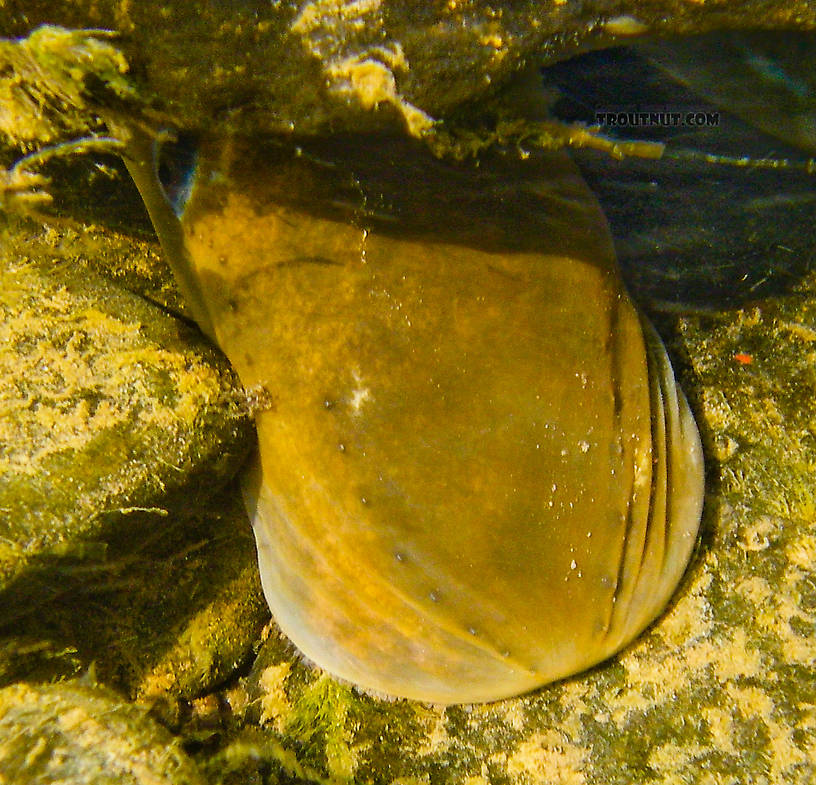
Here's the head of a sea lamprey which migrated up the Delaware River to spawn.
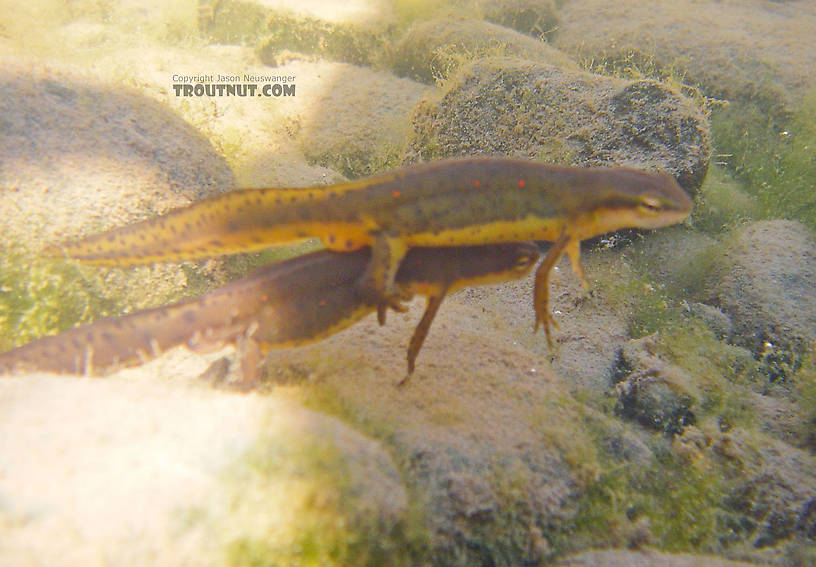
These are red-spotted newts, Notophthalmus viridescens viridescens. Thanks Gonzo for the ID.
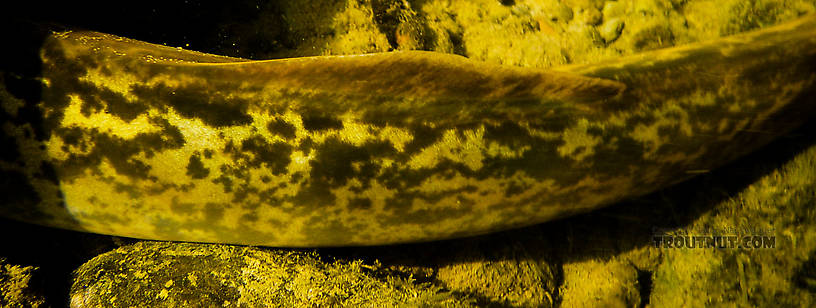
Here's the body of a sea lamprey which migrated up the Delaware River to spawn.
Closeup insects by Troutnut from the West Branch of the Delaware River, the Delaware River, and Miscellaneous New York in New York
Brachycentrus appalachia (Apple Caddis) Caddisfly Adult View 13 PicturesI captured this specimen in the same color as this photograph, during its egg-laying flight. The emergers are much lighter.
View 13 PicturesI captured this specimen in the same color as this photograph, during its egg-laying flight. The emergers are much lighter.
 View 13 PicturesI captured this specimen in the same color as this photograph, during its egg-laying flight. The emergers are much lighter.
View 13 PicturesI captured this specimen in the same color as this photograph, during its egg-laying flight. The emergers are much lighter.Collected May 13, 2007 from the West Branch of the Delaware River in New York
Added to Troutnut.com by Troutnut on May 18, 2007
Added to Troutnut.com by Troutnut on May 18, 2007
Penelomax septentrionalis Mayfly Nymph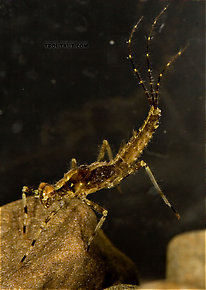 View 12 PicturesThis is surely the most distinctive-looking species in Ephemerellidae. I like the rugged, spindly look. If mayflies made movies, Penelomax septentrionalis would probably play the supervillain.
View 12 PicturesThis is surely the most distinctive-looking species in Ephemerellidae. I like the rugged, spindly look. If mayflies made movies, Penelomax septentrionalis would probably play the supervillain.
Maybe I should take a break and get something to eat.
 View 12 PicturesThis is surely the most distinctive-looking species in Ephemerellidae. I like the rugged, spindly look. If mayflies made movies, Penelomax septentrionalis would probably play the supervillain.
View 12 PicturesThis is surely the most distinctive-looking species in Ephemerellidae. I like the rugged, spindly look. If mayflies made movies, Penelomax septentrionalis would probably play the supervillain.Maybe I should take a break and get something to eat.
Collected May 13, 2007 from the Delaware River in New York
Added to Troutnut.com by Troutnut on May 18, 2007
Added to Troutnut.com by Troutnut on May 18, 2007
Siphlonurus quebecensis (Gray Drake) Mayfly Nymph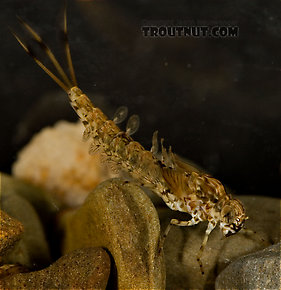 View 9 Pictures
View 9 Pictures
 View 9 Pictures
View 9 PicturesCollected May 13, 2007 from the Delaware River in New York
Added to Troutnut.com by Troutnut on May 18, 2007
Added to Troutnut.com by Troutnut on May 18, 2007
Hydropsyche (Spotted Sedges) Caddisfly Pupa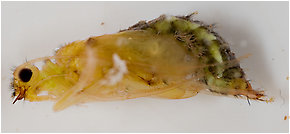 View 8 PicturesSeveral users have interesting comments in the discussion of this specimen, but this observation by Creno is especially good:
View 8 PicturesSeveral users have interesting comments in the discussion of this specimen, but this observation by Creno is especially good:
 View 8 PicturesSeveral users have interesting comments in the discussion of this specimen, but this observation by Creno is especially good:
View 8 PicturesSeveral users have interesting comments in the discussion of this specimen, but this observation by Creno is especially good:Also, this is what I would call an "immature" pupa. The wingpads of caddis pupae darken to nearly black as the enclosed adults near emerging. The darkening is the developing adult wing inside the pupal wing pad (Wing pad: A protrusion from the thorax of an insect nymph which holds the developing wings. Black wing pads usually indicate that the nymph is nearly ready to emerge into an adult.). The ultimate coloration of the adult wing is not very apparent in most pupal wing pads (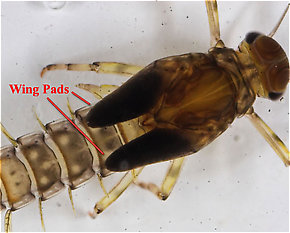 The wing pads on this final instar Baetidae mayfly nymph are extremely dark.Wing pad: A protrusion from the thorax of an insect nymph which holds the developing wings. Black wing pads usually indicate that the nymph is nearly ready to emerge into an adult.) as the majority of the adult wing coloration comes from the color/position of the adult wing hairs and setae (Seta: Little hairs on insects.). But dark pupal wingpads are a good indication that the emergence will occur very soon, likely that day or so, and that the adult parts are sufficiently developed within the pupae to make a species determination from the specimen, particularly if it is a male.
The wing pads on this final instar Baetidae mayfly nymph are extremely dark.Wing pad: A protrusion from the thorax of an insect nymph which holds the developing wings. Black wing pads usually indicate that the nymph is nearly ready to emerge into an adult.) as the majority of the adult wing coloration comes from the color/position of the adult wing hairs and setae (Seta: Little hairs on insects.). But dark pupal wingpads are a good indication that the emergence will occur very soon, likely that day or so, and that the adult parts are sufficiently developed within the pupae to make a species determination from the specimen, particularly if it is a male. The wing pads on this final instar Baetidae mayfly nymph are extremely dark.
The wing pads on this final instar Baetidae mayfly nymph are extremely dark.
Collected May 13, 2007 from the Delaware River in New York
Added to Troutnut.com by Troutnut on May 18, 2007
Added to Troutnut.com by Troutnut on May 18, 2007
Female Ephemera varia (Yellow Drake) Mayfly Dun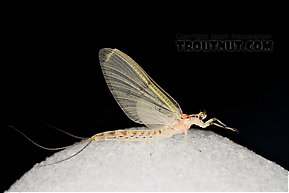 View 7 PicturesThis yellow drake dun hatched out of my aquarium over a month before her brethren in the wild are slated to emerge. She seems a bit small, and that might be the reason.
View 7 PicturesThis yellow drake dun hatched out of my aquarium over a month before her brethren in the wild are slated to emerge. She seems a bit small, and that might be the reason.
 View 7 PicturesThis yellow drake dun hatched out of my aquarium over a month before her brethren in the wild are slated to emerge. She seems a bit small, and that might be the reason.
View 7 PicturesThis yellow drake dun hatched out of my aquarium over a month before her brethren in the wild are slated to emerge. She seems a bit small, and that might be the reason.Apatania (Early Smoky Wing Sedges) Caddisfly Adult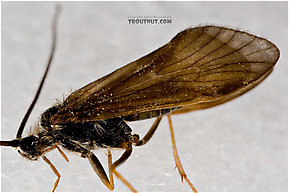 View 8 Pictures
View 8 Pictures
 View 8 Pictures
View 8 PicturesCollected May 13, 2007 from the West Branch of the Delaware River in New York
Added to Troutnut.com by Troutnut on May 18, 2007
Added to Troutnut.com by Troutnut on May 18, 2007
Sweltsa (Sallflies) Stonefly Nymph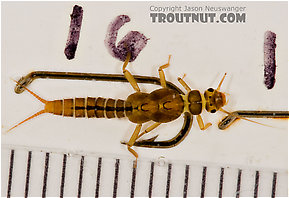 View 6 Pictures
View 6 Pictures
 View 6 Pictures
View 6 PicturesCollected May 13, 2007 from the Delaware River in New York
Added to Troutnut.com by Troutnut on May 18, 2007
Added to Troutnut.com by Troutnut on May 18, 2007
Lepidostoma (Little Brown Sedges) Little Brown Sedge Larva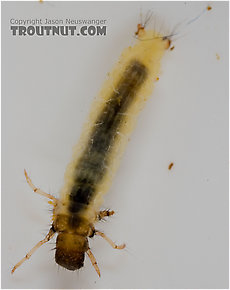 View 6 Pictures
View 6 Pictures
 View 6 Pictures
View 6 PicturesCollected May 13, 2007 from the Delaware River in New York
Added to Troutnut.com by Troutnut on May 18, 2007
Added to Troutnut.com by Troutnut on May 18, 2007
Polycentropus (Brown Checkered Summer Sedges) Caddisfly Larva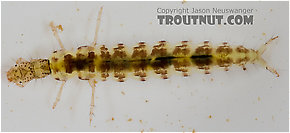 View 4 Pictures
View 4 Pictures
 View 4 Pictures
View 4 PicturesCollected May 13, 2007 from the Delaware River in New York
Added to Troutnut.com by Troutnut on May 18, 2007
Added to Troutnut.com by Troutnut on May 18, 2007
Siphlonurus quebecensis (Gray Drake) Mayfly Nymph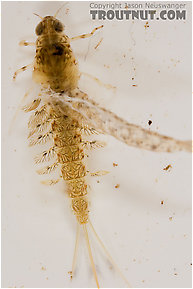 View 5 PicturesI photographed this nymph in the middle of molting between one instar (Instar: Many invertebrates molt through dozens of progressively larger and better-developed stages as they grow. Each of these stages is known as an instar. Hard-bodied nymphs typically molt through more instars than soft-bodied larvae.) and the next (not hatching).
View 5 PicturesI photographed this nymph in the middle of molting between one instar (Instar: Many invertebrates molt through dozens of progressively larger and better-developed stages as they grow. Each of these stages is known as an instar. Hard-bodied nymphs typically molt through more instars than soft-bodied larvae.) and the next (not hatching).
 View 5 PicturesI photographed this nymph in the middle of molting between one instar (Instar: Many invertebrates molt through dozens of progressively larger and better-developed stages as they grow. Each of these stages is known as an instar. Hard-bodied nymphs typically molt through more instars than soft-bodied larvae.) and the next (not hatching).
View 5 PicturesI photographed this nymph in the middle of molting between one instar (Instar: Many invertebrates molt through dozens of progressively larger and better-developed stages as they grow. Each of these stages is known as an instar. Hard-bodied nymphs typically molt through more instars than soft-bodied larvae.) and the next (not hatching).Collected May 13, 2007 from the Delaware River in New York
Added to Troutnut.com by Troutnut on May 18, 2007
Added to Troutnut.com by Troutnut on May 18, 2007
Penelomax septentrionalis Mayfly Nymph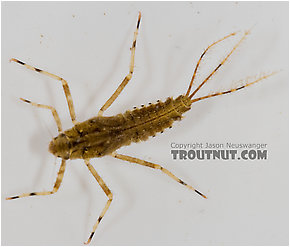 View 3 Pictures
View 3 Pictures
 View 3 Pictures
View 3 PicturesCollected May 13, 2007 from the Delaware River in New York
Added to Troutnut.com by Troutnut on May 18, 2007
Added to Troutnut.com by Troutnut on May 18, 2007
Most recent comments on this post (latest on top)
Comment on this post
Top 10 Fly Hatches
Top Gift Shop Designs
Eat mayflies.
Top Insect Specimens
Miscellaneous Sites
Troutnut.com is copyright © 2004-2024 Jason
Neuswanger (email Jason). See my FAQ for information about use of my images.
 privacy policy
privacy policy
